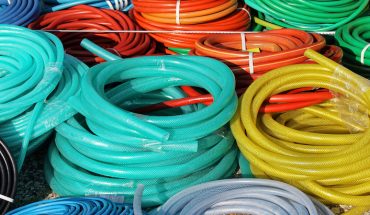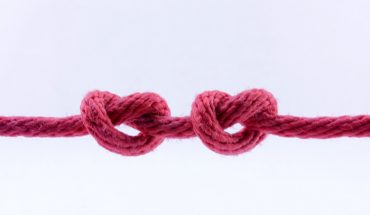Breastfeeding your new baby can be difficult, and with side effects like sore nipples, engorgement and thrush, sometimes it can be hard to keep going. To help you on your breastfeeding journey, Lactation Consultant, Kitty Hackel offers her best tips and advice on some common breastfeeding problems and how you can overcome them.
1. Sore nipples
Many women who breastfeed may experience nipple discomfort or tenderness in the first few weeks of feeding. This transient soreness usually peaks between day 3-5 due to changing hormone levels as your milk transitions from colostrum to more mature milk. The frequent feeds, getting used to baby’s suction and making sure baby is latched properly can all contribute to sore nipples, to help with this try some of my top tips.
· Ensure that your baby is latched properly during feeds, if you’re unsure of whether or not the latch is right then reach out to your midwife or ask your health visitor.
· Try putting breast shells or silver cups over the sore area when wearing a bra to reduce chaffing and irritation.
· Breastfeed on the least sore breast first as baby tends to feed most vigorously at the beginning.
· Use Multi-Mam Breastfeeding Compresses which are formulated to help treat sore, dry and swollen nipples. The compresses contain a cooling gel with patented bio-active polysaccharides, the so called “2 QR-complex” which can prevent harmful bacteria from attaching to the tissue. The cooling pads can be applied at least twice a day for 30-60minutes – pro tip: store in the fridge for added cooling effect.
2. Engorgement
By definition, engorgement is when the milk volume exceeds the alveoli’s capacity. This generally peaks between 2 and 5 days as your milk comes in, your breasts may feel full, heavy and hard at times. To ease this discomfort while your milk production settles down try the following:
· Offer both breasts at every feed to avoid long periods between feeds and try to feed your little one frequently by observing their feeding cues rather than watching the clock.
· Apply a warm compress to your breast before feeds and then use a cool one after feeds to sooth the area.
· Using cool, fresh green cabbage leaves in your bra between feeds is a fantastic for breast engorgement. Wash and apply them to the engorged area to reduce discomfort – be careful not to use them for more than 20 minutes daily as it can reduce your supply.
3. Thrush
Breast and nipple thrush is a yeast infection of the nipple and breast caused by a fungal organism known as Candida albicans, a common cause of all thrush infections. It occurs most commonly in breastfeeding mothers and the infection may lead to severe nipple and breast pain. Diagnosis can be tricky as it can be mistaken for many other breastfeeding issues and so is often the most over diagnosed breastfeeding issue.
If you have or are experiencing breast/nipple thrush, try not to worry, it is entirely treatable. Some of the advice I give to my patients who experience thrush is:
· Good hygiene is so important. To help this try washing your breasts with warm water and soap twice per day. Good hand hygiene, regularly changing breast pads and washing of bras separately in a high heat wash can also all help.
· Observe your diet, the particular fungus that causes thrush thrives off of simple carbohydrates, eliminating these from your diet could help ease your symptoms.
· If none of these seem to work for you, contact your GP to help kick the infection by using the appropriate medication, this should start clearing up the infection in 2-3 days.
4. Mastitis
Mastitis is an inflammation of breast tissue that sometimes involves an infection. The inflammation results in breast pain, swelling, warmth and redness. You might also experience a fever and chills.
Mastitis can be caused by a whole host of reasons from improper drainage, pressure on your breasts, tight bras, stress or even sleeping on your front. Mastitis is often very uncomfortable, so it is important to get to the bottom of why you are experiencing this. My motto for Mastitis and abscess prevention is heat – massage – rest – empty breast. To help combat Mastitis try the following:
· Avoid tight or restrictive clothing that could constrict the milk duct – this includes bras, seatbelts and even your handbag.
· Rest is really important, try and get your friends or family to help out a home while you rest and recover.
· Anti-inflammatories like ibuprofen can help bring down the swelling while also helping with pain management until things become a little easier.
If you have tried all the above tips and you don’t begin to feel better after 24 hours contact your GP as they may offer an appropriate course of antibiotics.
5. Vasospasm
Nipple vasospasm is a constriction of the blood vessels with resultant colour changes to the face of the nipple, the constriction can cause shooting pain or cramping in the nipple. Treatment of vasospasm generally depends on the cause of the vasoconstriction, but some options are:
· Try to optimise baby’s latch to reduce the compression on the nipple.
· Use a warm compress on the affected area to soothe some of the discomfort, you can also try compressing the nipple towards the chest wall as this can do wonders to relieve the immediate discomfort.
· For some women, the use of high dose calcium and magnesium mineral supplementation could be helpful where appropriate.
As with lots of ‘new-baby’ experiences, breastfeeding isn’t always easy and there are often some bumps in the road, if you’re worried about any of these issues be sure to contact your GP or qualified Lactation Consultant for more advice and information.
- New lipid-based pathway discovered as key to memory formation - 25th June 2025
- Crucial link could explain how Alzheimer’s takes hold - 25th June 2025
- Understanding Your Mind Can Improve Daily Life - 25th June 2025







